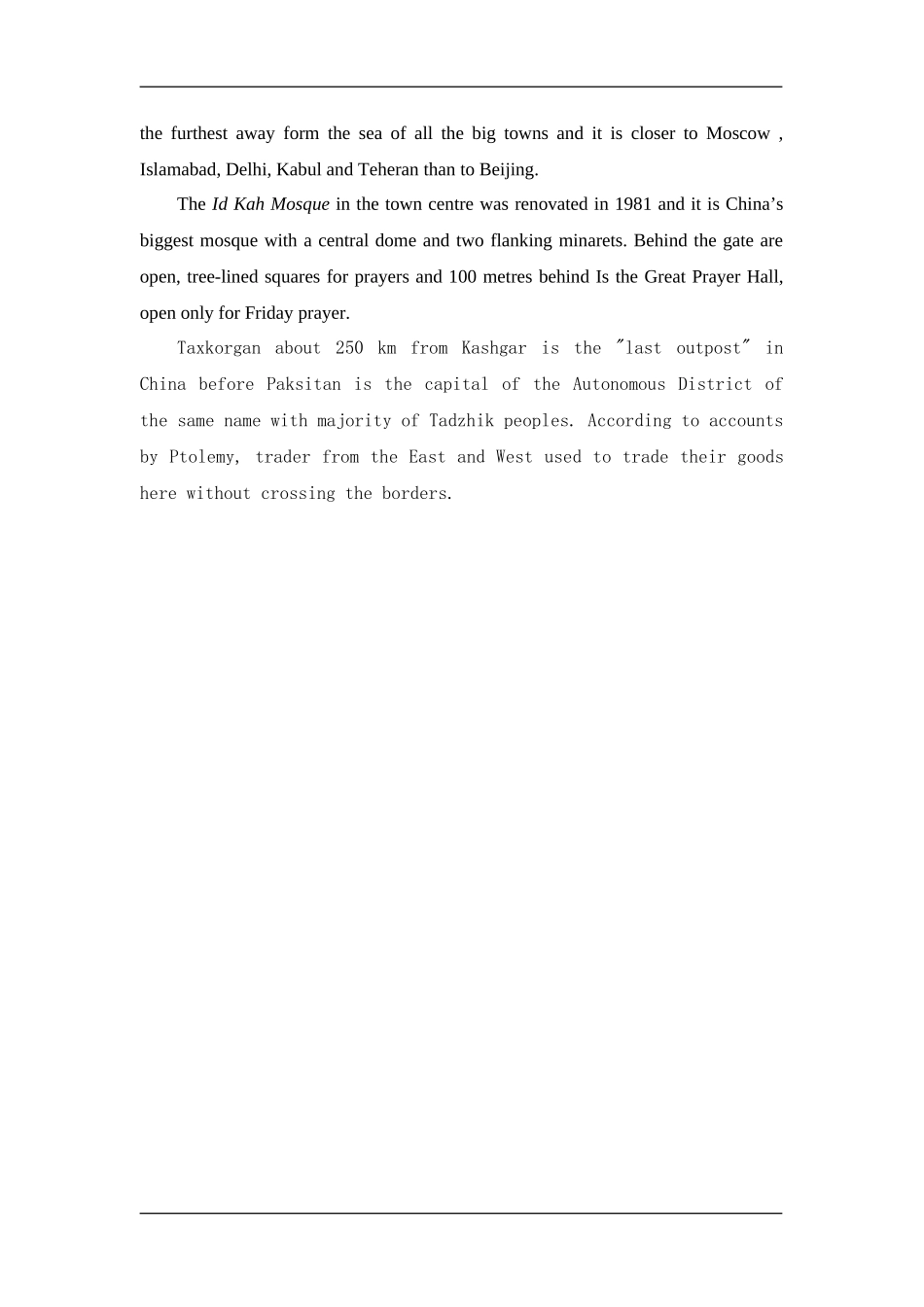The Silk RoadThis ancient trade route starts in the old capitals of Luoyang and X’ian,reaches the Yellow River at Lanzhou, follows along the "Gansu Corridor" and stretches along the edge of deserts and mountains. Before the discovery of the sea route to India, the Silk Road was the most important connection between the Orient and the West. It experienced its last great era during the time of Mongols, when the entire route from China to the Mediterranean was part of one empire. At that time, Nicolo and Marco Polo traveled from Kashgar to the Far East along the southern route. The overland link quickly lost its importance as trade across the seas developed. Today it has been replaced in China with the railway line Lanzhou-Hami-Urumqi. The last part, to Alma-Ata in Kazatchstan was completed in 1992. The trade route was never known as the Silk Road historically. It was given the name by a German geographer Ferdinand Freiherr von Richthofen. Zhangye, the capital of Zhangye province was founded in 121 BC as a garrison town, has a bell tower in the town centre. It dates from 1509 , with a bell from the Tang period. The Wooden Pagoda found here is also dates from the Tang period, though its the first six floors out of a total of eight are actually made of brick. It is generally no possible for travelers to stay in these places as some of them are restricted military areas.Jinquan, which is a growing industrial town, was founded in 111 BC as a garrison town, Between 127 and 102 BC, the Han emperors relocated about 980,000 peasant families as paramilitary peasants including at least 700,000 victims of the flood in Shandong. The charming Springs Parks at the edge of the town was bui...


